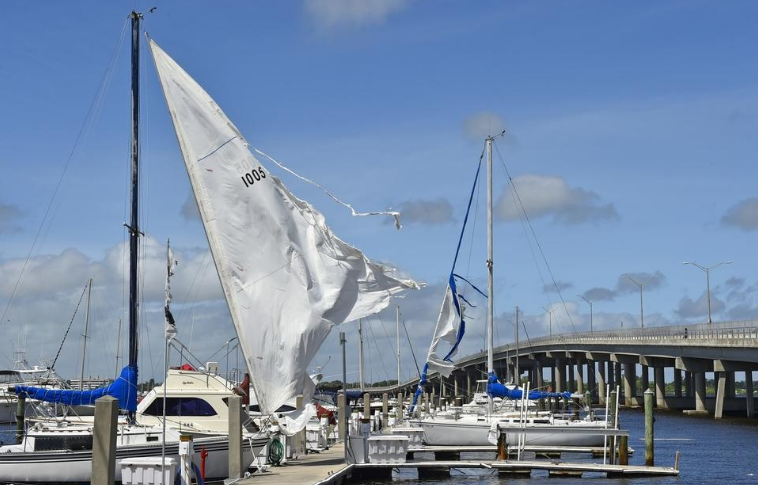Sarasota Real Estate after the Storm

After the Storm, Realtors say no downturn in Sarasota-Manatee market
Hurricane Irma hasn’t blown the roof off the Sarasota-Manatee real estate market. The historic tropical cyclone, once a Category 5 monster and a violent Category 4 upon its first landfall in Florida, did leave a trail of destruction across the state. Just not on home sales. And not on residential construction.
In the hot Sarasota and Manatee market, real estate agents and brokers are not reeling from Irma. It’s business as usual, even with hurricane fears among some potential buyers.
“So far, we haven’t seen any impact. All closings are going forward,” Greg Owens, broker and owner with Keller Williams on the Water, said Thursday.
“Our phones are ringing, people are still selling homes,” said the 2017 president-elect for the Realtor Association of Sarasota & Manatee. “One guy wanted to see homes on Monday” — even with downed trees and limbs strewn everywhere, power outages all too common and recovery efforts barely underway after Irma’s strike on Sunday.
While Cathy Loeppke recognizes the extent of Irma’s impact on the market has yet to be determined, the Realtor with DWELL Real Estate in Sarasota has sales contracts still pending and none of her house-hunters scheduled to visit this month have cancelled.
“Hurricanes are often mentioned by my buyers. … They see news footage of the worst hurricane damage,” she said. “Rarely do they see news coverage saying, ‘Look over here. There are some trees down, but very little damage.’”
Loeppke counters storm fears with the reality that few places in the nation are immune from natural disasters: tornadoes in the Midwest, flooding along the Mississippi River, earthquakes in California, wildfires in forests, paralyzing snowstorms in the mountains and northern states. At least with hurricanes, there is plenty of advance warning and time to prepare and/or evacuate.
Most important is reciting Florida’s magnetic appeal: sandy beaches; warm winters; no state income tax; recreation, such as winter golf; and theme parks among others.
What research shows
The 1992 Category 5 storm slammed into South Florida in mid-August 1992 and left as the most destructive in the state’s history. The city of Homestead took a direct hit. Andrew provided McCarty and Smith with historic evidence to study.
Their research focused on determining whether hurricanes have a permanent effect on people’s view of a region. They found cyclones had no lasting influence on their intentions to visit or move to Florida.
New UF research found the calamitous 2004 hurricane season had a minor or no impact on the state’s 2004-2005 population growth. Census data shows Florida led the country in the migration of Americans to a new state with around 585,000 newcomers in 2015. The Tampa region ranked fifth in the nation for population growth from migration in 2016 with 58,000 newcomers planting roots here.
Brad O’Connor, chief economist for the Orlando-base Florida Realtors trade group, summed up the issue succinctly: “Hurricanes will never stop Florida’s growth.” Furthermore, he said Friday, “I don’t see a whole lot of evidence Irma is scaring people off.”
In 2004, Hurricane Ivan devastated Pensacola and real estate sales plunged over the following month, O’Connor noted. But the next month, the market regained its strength, illustrating the fictional view that hurricanes have a lasting impact. Some storms cause major but temporary interruptions in a community, like Hurricane Charley did on Charlotte County cities in 2004, O’Connor said. Still, communities rebound from even the worst circumstances and grow stronger, like Homestead did in Andrew’s aftermath.
Some tangible effects
The prices of softwood lumber, ready-mix concrete and OSB engineered lumber spiked in August. Demand will surge as rebuilding and repairs swamp the market. Construction workers will be in a solid position to demand higher pay.
Product prices don’t faze Pat Neal, one of Southwest Florida’s premier home builders and developers. His company, Neal Communities, has pricing agreements with vendors so costs are stable. “Our problem,” he said, “is getting the labor back.” Some crews fled as far as New Mexico, but Neal expects they’ll return. “We may find some cost increases in labor,” he predicted.
Hurricane Irma did mess up 633 homes in various stages of construction, but crews cleared the debris and not a single home suffered damage, he said.
Neal’s third-quarter home sales were “very strong,” he said, with 121 residences in new hands in August alone. He, too, sees no evidence that Irma will slow the real estate and home building sectors.
As Loeppke said, “None of my customers have retreated.” And from Owens, “I find the market extremely healthy.”
Herald Tribune September 15, 2017
